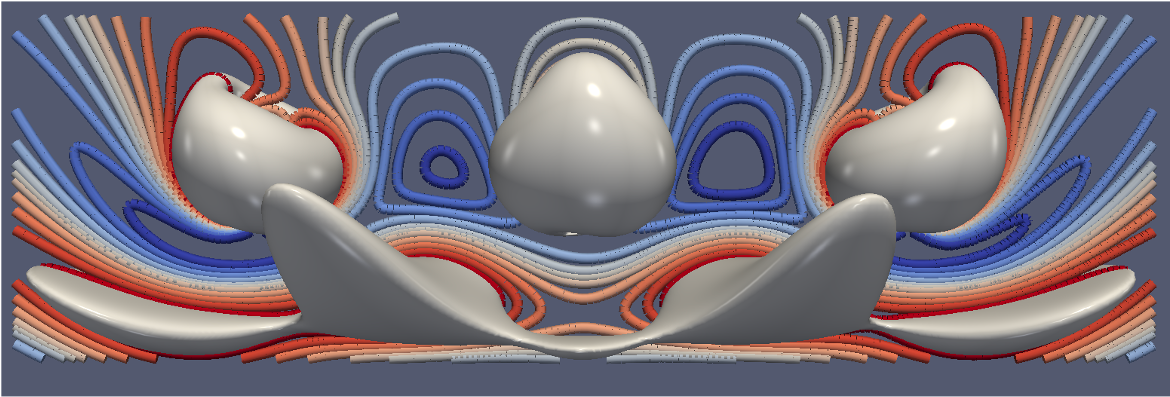MiePy is a Python module for the generalized multiparticle Mie theory (GMMT), also known as the aggregate T-matrix method. MiePy solves the electrodynamics of a collection of spherical or non-spherical scatterers with an arbitrary incident source.

Electric field around a 37 particle cluster

3D electric field contours around three metal nanoparticles
- Non-spherical particles using the T-matrix formulation via the null-field method with discrete sources (NFM-DS). Includes cylinders, spheroids, ellipsoids, cubes and polygonal prisms
- Arbitrary incident sources (plane waves, Gaussian beams, HG and LG beams, point dipoles)
- Evaluation of cluster cross-sections and optical force and torque on individual particles
- Periodic boundary conditions with various lattice types (square, hexagonal, etc.) and mirror and discrete rotational symmetries for faster calculations
- Optional planar interface (substrate)
- 3D scene visualization using the VPython library
- Image clusters using a simulated microscope
- OpenMP parallelization for systems with larger numbers of particles
pip install miepyIf using uv:
uv venv --python 3.13
uv pip install miepy
source .venv/bin/activate
See the examples folder for how to use MiePy.
Run any of the available examples without explicit installation using uv:
| Command | Description |
|---|---|
uvx miepy dielectric_sphere |
Dielectric sphere scattering and cross-sections |
uvx miepy ag_sphere |
Silver sphere scattering and absorption |
uvx miepy ag_shell |
Core-shell particle scattering |
uvx miepy vary_index |
Scattering intensity vs wavelength and refractive index |
uvx miepy fields |
Electric and magnetic field visualization |
uvx miepy dimer_scattering |
Au dimer cross-sections |
uvx miepy dimer_force |
Force and torque on dimer particles |
uvx miepy far_field |
Far-field radiation patterns |
uvx miepy whispering_gallery |
Whispering gallery modes in dielectric sphere |
uvx miepy focused_gaussian |
Focused Gaussian beam with orbital angular momentum |
uvx miepy imaging |
Near-field, far-field, and microscope imaging |
For an overview of the theory, see docs folder.
MiePy uses vcpkg for C++ dependency management and uv for Python management, which simplifies building across platforms.
Prerequisites:
- GCC and GFORTRAN
- uv
Build steps:
- Clone MiePy and its submodules:
git clone https://github.com/johnaparker/miepy.git miepy --recurse-submodules && cd miepy- Bootstrap vcpkg (first time only):
./vcpkg/bootstrap-vcpkg.sh- Install MiePy using uv:
uv sync- Optionally, run the tests to verify correctness:
uv run pytest testsMiePy is licensed under the terms of the GPLv3 license.